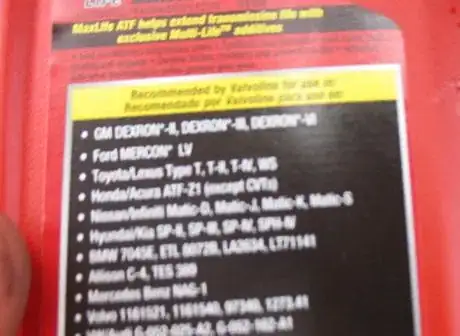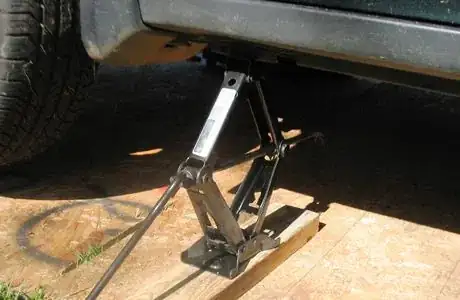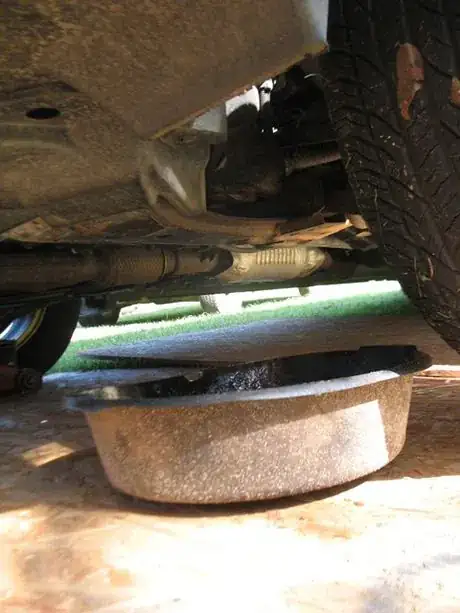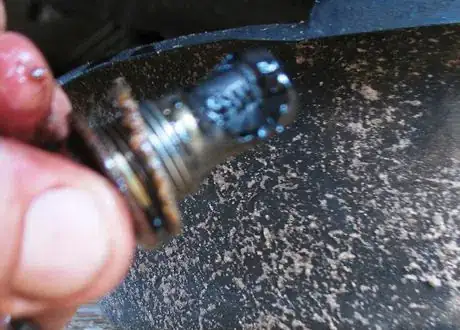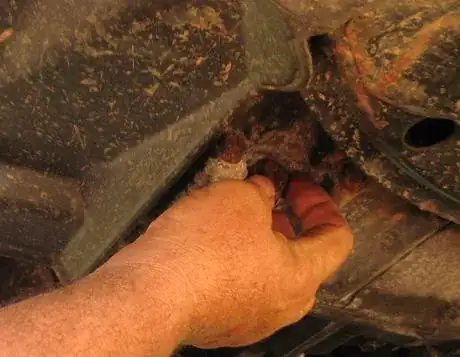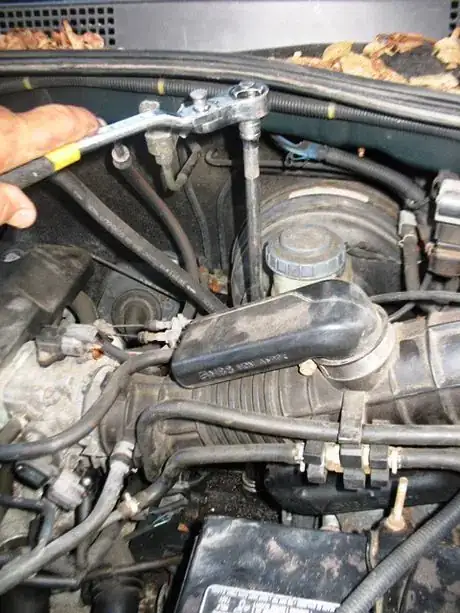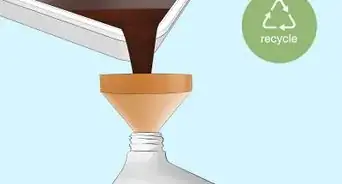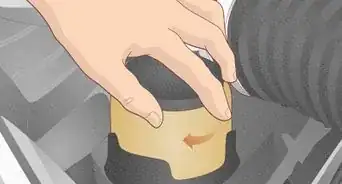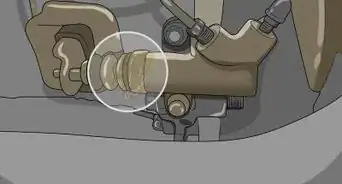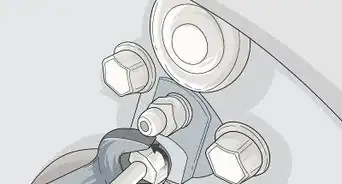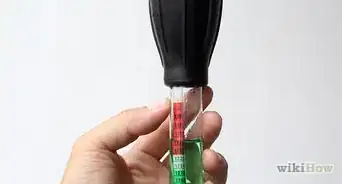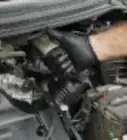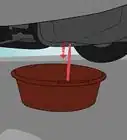This article was co-authored by Ed Beery. Ed Beery is an Automotive Specialist and the Owner of InTechgrity Automotive Excellence based in Denver, Colorado. With more than eight years of experience, he specializes in providing maintenance and repair services for both individuals and companies. Ed and the InTechgrity Automotive Excellence Team are approved by the American Automobile Association (AAA) for repairs and are Automotive Service Excellence (ASE) certified.
There are 7 references cited in this article, which can be found at the bottom of the page.
wikiHow marks an article as reader-approved once it receives enough positive feedback. In this case, 100% of readers who voted found the article helpful, earning it our reader-approved status.
This article has been viewed 182,317 times.
Honda Odyssey vans require automatic transmission fluid changes at 30,000 mile (48,000 km) intervals.[1] This helps protect the transmission from failure, and is a simple procedure almost anyone can do. Here are steps to help you accomplish this project.
Steps
-
1Purchase the replacement transmission fluid. Most mechanics recommend using only Honda OEM fluid, but other products will work if they are labelled ATF DW-1 or ATF-Z1.[2] A normal fluid change will require about 3.3 US quarts (3,000 ml) (3 liters) of fluid.
-
2Jack up the vehicle using the lift point on the driver's side behind the front wheel.[3] The fluid drain plug can be reached without requiring you to actually get underneath the van, but it is always recommended you support the vehicle with jack stands before proceeding.Advertisement
-
3Place a drain pan underneath drain plug to catch the old fluid. You will find the drain hole behind the plastic shroud behind the front bumper. Make sure to allow for the draining oil's trajectory, since it will at first flow out rather quickly.
-
4Remove the transmission drain plug using a 3⁄8 inch (1.0 cm) ratchet. The drain plug has a recessed hole to accommodate the ratchet drive stud. Turn it counterclockwise until loose, then finish removing it with your fingers.
-
5Allow all the fluid that will to drain from the transmission. This may take several minutes, but the objective is to replace as much of the old fluid as possible.
-
6Clean the magnet on the drain plug and replace it.[4] The manufacturer and some aftermarket service manuals recommend always changing the aluminum crush washer with each change to prevent leaks. These can be purchased from your Honda dealer if you desire to replace them.
-
7Tighten the drain plug snuggly and remove tools and the drain pan from underneath the vehicle.[5] Remove the jack stands or supports and lower it with the jack.
-
8Remove the filler plug on top of the transmission. This will require a 17mm socket and a 15 inch (38.1 cm) long extension, since it is below and behind the air breather assembly. Sometimes breaking the filler plug may require using a cheater since the bolt can be very tight.
-
9Place a long throated funnel in the filler hole and pour in 3 US quarts (3,000 ml) of ATF-Z1 or ATF DW-1 fluid.[6]
-
10Replace the filler plug and crank the vehicle's engine. Hold the break and shift the transmission manually through all of the gears. Shut off the engine and check the fluid level.[7] Many service guides and forums suggest repeating the process two or three times to remove more of the fluid, since draining the fluid only removes the fluid in the main transmission body and reservoir, leaving old fluid in the torque converter and valve body.
-
11Recheck the transmission fluid level after a test drive to make sure it is full. Normally, a fluid change will require slightly more than 3 US quarts (3,000 ml). To check the fluid, use the transmission fluid dipstick. Drive the vehicle until it is warmed up and has shifted through all of the gears, park it on a level surface, and shut it off. Remove the dipstick between 60 and 90 seconds after turning the engine off, and make sure the level is between the two marks.
Community Q&A
-
QuestionWhere is the transmission filter located on my 2014 Honda Odyssey mini van?
 Community AnswerThere isn't any! These transmissions have no serviceable filter, just a screen to keep larger debris from circulating, and that screen can only be accessed after disassembling the transmission housing, so, just make sure you change your fluid regularly, at least every 40 000 miles/ 60 000 kms, and don't use Dexron.
Community AnswerThere isn't any! These transmissions have no serviceable filter, just a screen to keep larger debris from circulating, and that screen can only be accessed after disassembling the transmission housing, so, just make sure you change your fluid regularly, at least every 40 000 miles/ 60 000 kms, and don't use Dexron. -
QuestionWhere is the transmission fluid drain plug for a 2001 Odyssey?
 Community AnswerOn the lower right side of the transmission, probably lined up with the driver's side tire.
Community AnswerOn the lower right side of the transmission, probably lined up with the driver's side tire. -
QuestionIs it absolutely necessary to use only Honda transmission fluid in my Civic?
 Community AnswerYou won’t be saving much, if any, measurable money; Hondas love their factory fluids. I’d strongly suggest staying with factory spec fluids for transmission and power steering.
Community AnswerYou won’t be saving much, if any, measurable money; Hondas love their factory fluids. I’d strongly suggest staying with factory spec fluids for transmission and power steering.
Warnings
- Never work underneath an improperly supported vehicle!⧼thumbs_response⧽
References
- ↑ https://www.cartalk.com/content/service-your-car-14
- ↑ https://techinfo.honda.com/rjanisis/pubs/om/AC0606/AC0606O00211A.pdf
- ↑ https://www.dummies.com/home-garden/car-repair/how-to-safely-jack-up-your-vehicle/
- ↑ https://youtu.be/VG_5KDuCh3g?t=224
- ↑ https://youtu.be/VG_5KDuCh3g?t=260
- ↑ https://youtu.be/LrCPc9t0IPU?t=355
- ↑ https://youtu.be/QibYP5c5RTE?t=603
